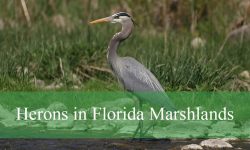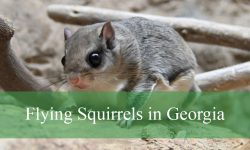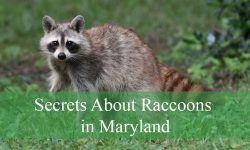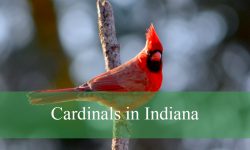Nevada’s rugged landscapes host an impressive variety of jay species, from the bold Steller’s Jay in mountain forests to the specialized Pinyon Jay of arid woodlands. Each jay has adapted to its environment, making the state a fascinating destination for bird enthusiasts.
These intelligent and colorful birds are known for their loud calls, striking plumage, and resourceful feeding habits. Whether caching seeds in the desert or scavenging in alpine campsites, jays play an important role in Nevada’s ecosystems.
Birdwatchers visiting Nevada can enjoy sightings throughout the year, depending on habitat and elevation. From lowland deserts to high mountain peaks, the state offers a chance to encounter five unique jay species, each with its own story to tell.
Different Types of Jays Found in Nevada
Pinyon Jay (Gymnorhinus cyanocephalus)
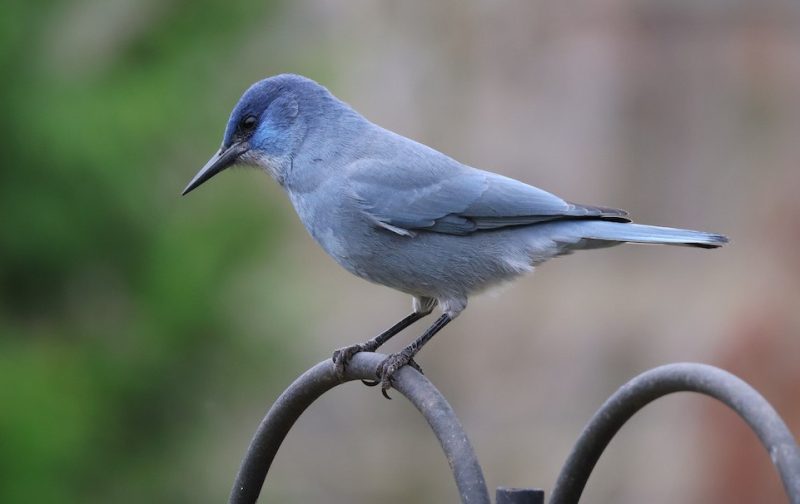
The Pinyon Jay is one of Nevada’s most iconic birds, strongly tied to the vast pinyon-juniper woodlands that cover much of the state’s semi-arid regions. This jay is recognized by its uniform blue-gray plumage, lacking the bold patterns or crests seen in other jay species. It has a sturdy body, a sharp bill, and a harsh, nasal call that is often heard before the flock is seen. With short tails and long, pointed wings, they travel in large, noisy flocks that animate the dry woodlands.
Pinyon Jays are medium-sized birds, measuring around 9–11 inches in length with a wingspan of about 16–18 inches. Their feathers are a dusty blue with grayish tones, blending well with the desert scrub and conifer forests. Unlike Steller’s Jays or Blue Jays, they lack a crest. Both sexes look similar, and their dark eyes and black bills add to their plain yet distinctive appearance.
This species is highly social and rarely seen alone. They form tight-knit colonies where they not only forage together but also nest in loose colonies. Their communal lifestyle allows them to respond quickly to predators and to exploit food sources efficiently. These social groups often persist year-round, moving as a unit across the landscape in search of food.
Pinyon Jays are opportunistic feeders but are most famous for their dependence on pinyon pine seeds. They have a strong bill capable of cracking cones and extracting seeds, which they store in throat pouches and cache in the ground for later use. These caches help them survive harsh winters and also play an ecological role by dispersing pine seeds, contributing to forest regeneration.
In Nevada, Pinyon Jays are primarily found in mid-elevation pinyon-juniper forests, but they may also venture into sagebrush flats and montane slopes. Their numbers have been declining due to habitat loss and changes in forest management, making them a conservation concern. They remain, however, a signature species of the state’s rugged landscapes, embodying the ecological link between bird and tree in arid mountain habitats.
Woodhouse’s Scrub-Jay (Aphelocoma woodhouseii)

Woodhouse’s Scrub-Jay is one of the most widespread jay species in Nevada, thriving in semi-arid habitats such as pinyon-juniper woodlands, desert scrub, and rocky foothills. This jay is sleeker and less boldly colored than its close relative, the California Scrub-Jay. Its plumage is mostly dull blue on the back, wings, and tail, with a grayish chest and pale belly. The bird has no crest, giving it a more streamlined appearance. Its harsh, raspy calls echo through dry canyons and shrublands, often alerting birdwatchers to its presence.
These birds are medium-sized, usually about 11 inches long with a wingspan of 15–16 inches. They have a slender black bill, long tail, and strong legs well-suited for hopping along branches or the ground. The blue coloration can vary slightly in tone depending on light, but the overall impression is of a subdued, dusty-blue bird with gray highlights. Males and females look alike, while juveniles appear duller with more muted shades.
Scrub-Jays are intelligent and bold, often showing curiosity around humans. They are known for their memory skills, especially when caching food such as acorns or pine nuts. Unlike the flocking Pinyon Jay, Woodhouse’s Scrub-Jay tends to live in pairs or small family groups. They defend territories vigorously and can be aggressive toward intruders, other jays, and even larger birds.
Their diet is varied, consisting of acorns, pinyon seeds, berries, insects, and small vertebrates such as lizards or nestling birds. They frequently bury excess food in the ground, remembering hundreds of cache sites over long periods. This caching behavior not only sustains them during food shortages but also aids in seed dispersal across Nevada’s dry landscapes.
In Nevada, Woodhouse’s Scrub-Jays are widespread in the central and southern parts of the state where pinyon-juniper woodlands dominate. They also adapt to suburban edges, visiting backyards for bird feeders or scavenging scraps. Their adaptability and resourcefulness have made them one of the most reliable jay sightings in the region.
Steller’s Jay (Cyanocitta stelleri)
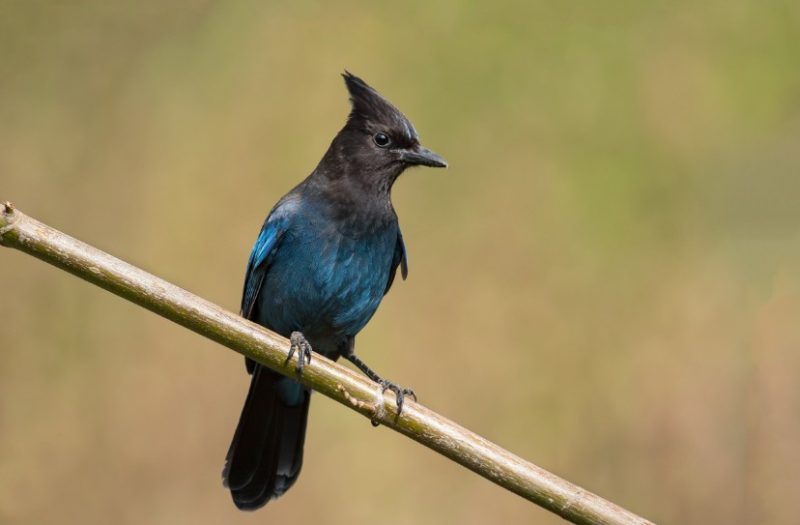
Steller’s Jay is the most strikingly patterned jay in Nevada, instantly recognizable by its bold black crest and deep cobalt-blue plumage. This bird is primarily found in higher elevations, particularly in montane coniferous forests dominated by ponderosa pine, Douglas fir, and spruce. Its loud, scolding calls and mimicry skills make it one of the most conspicuous birds in the forest canopy.
The Steller’s Jay measures around 11–13 inches in length with a wingspan close to 17 inches. It has a prominent, pointed crest that is entirely black in the Nevada populations, contrasting with its brilliant blue wings, tail, and underparts. The upper body is darker, almost charcoal black, fading into electric blue on the lower parts. Its strong black bill and piercing eyes add to its commanding presence.
Behaviorally, Steller’s Jays are curious and bold, often approaching campsites or picnic areas to scavenge food. They live in family groups and sometimes join mixed flocks of other birds, especially in winter. Their vocal repertoire is extensive, and they are known to mimic the calls of hawks, cats, dogs, and even machinery, which can confuse both predators and birdwatchers.
The diet of Steller’s Jays is highly varied. They eat pine nuts, acorns, seeds, berries, insects, and small animals, including the eggs and nestlings of other birds. In human-inhabited areas, they are opportunistic scavengers, stealing food from campsites or bird feeders. Their powerful bills are adapted for cracking hard seeds, and like other jays, they store surplus food for later consumption.
In Nevada, Steller’s Jays are most often seen in the higher mountain ranges, particularly in the Sierra Nevada, Spring Mountains, and Ruby Mountains. They are less common in the state’s arid lowlands but thrive in cooler, forested zones. Their striking appearance and raucous behavior make them an unforgettable part of Nevada’s alpine birdlife.
California Scrub-Jay (Aphelocoma californica)
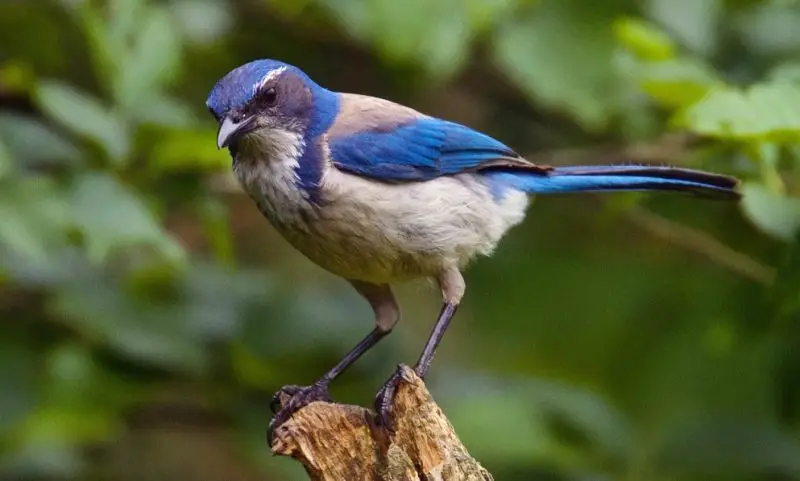
The California Scrub-Jay is primarily a species of the Pacific Coast, but it extends into the far western edge of Nevada, particularly near the Sierra Nevada and the Reno-Tahoe region. This jay is brighter and bolder than Woodhouse’s Scrub-Jay, with vivid blue plumage on the head, wings, and tail, contrasted by a clean white underside and a distinct blue necklace across the chest. Its loud “shreeep” calls are distinctive and often give away its presence in thickets and oak woodlands.
This species is slightly larger than Woodhouse’s, averaging 11–12 inches in length with a wingspan of 15–17 inches. Its more vibrant coloration, especially the sharp contrast between the blue upperparts and the white underparts, makes it easier to distinguish. It also has a straighter, stouter bill than Woodhouse’s Scrub-Jay, adding to its recognizable features.
California Scrub-Jays are bold, active, and often conspicuous. They are territorial and not shy about confronting intruders, including larger birds. Unlike the more social Pinyon Jay, they usually live in pairs or small groups. They are highly intelligent and have been observed using problem-solving skills and memory to secure food resources.
Their diet consists of acorns, seeds, fruits, insects, and small vertebrates. They are especially noted for their caching behavior, burying acorns in soil and leaf litter. This behavior not only supports their survival during scarce times but also plays a significant ecological role in oak woodland regeneration. They may also visit backyard feeders, particularly in urban edges near Reno and Lake Tahoe.
In Nevada, California Scrub-Jays are limited in distribution, mainly occurring in the westernmost parts of the state adjacent to California. They favor oak woodlands, chaparral, and mixed coniferous forests, where they often overlap with Steller’s Jays. Their bright plumage and energetic behavior make them stand out in contrast to the more muted Woodhouse’s Scrub-Jay, adding to Nevada’s diversity of jay species.
Blue Jay (Cyanocitta cristata)
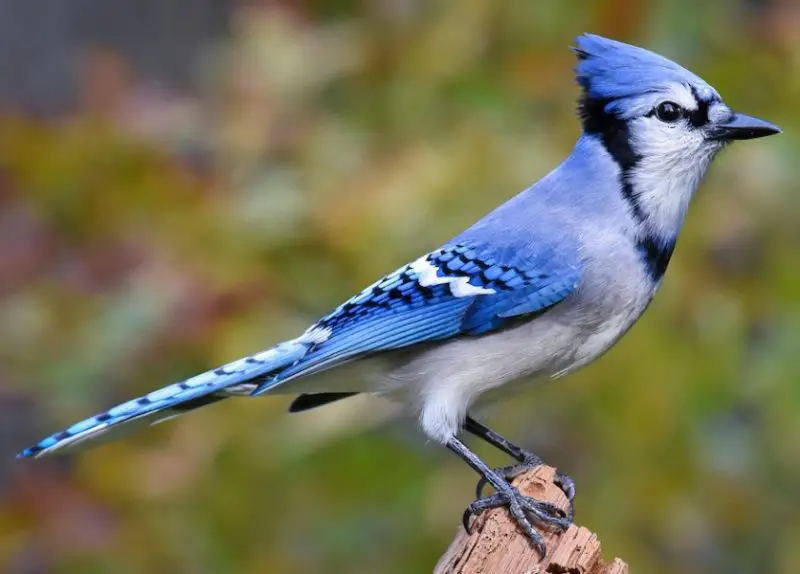
The Blue Jay is one of the most familiar jays in North America, though in Nevada it is only an occasional visitor rather than a common resident. This species is instantly recognizable by its bright blue plumage, white underparts, and black necklace across the chest. Its prominent crest and loud, varied calls make it stand out wherever it appears. While abundant in the eastern United States, sightings in Nevada are rare and usually limited to migration periods or unexpected vagrants.
Blue Jays are medium-sized, measuring about 9–12 inches in length with a wingspan of 13–17 inches. Their plumage features a vivid combination of sky blue, white, and black, with a striking barred pattern on the wings and tail. The crest can be raised or flattened depending on the bird’s mood, serving as a signal of aggression or alertness. Both males and females look alike, making them easy to identify but difficult to sex in the field.
These jays are highly intelligent and resourceful. In areas where they are common, Blue Jays are known for their curiosity, boldness, and complex social behaviors. They live in family groups or loose flocks and communicate with a wide range of vocalizations. Remarkably, they can mimic the calls of hawks, a trick that sometimes scares away other birds from food sources.
The diet of Blue Jays is varied and adaptable. They consume acorns, seeds, berries, insects, and occasionally small vertebrates or bird eggs. Like many other jays, they are known for caching food in the ground for later use, a behavior that contributes to forest regeneration. At backyard feeders, they are fond of peanuts and sunflower seeds, often dominating smaller songbirds with their assertive presence.
In Nevada, Blue Jays are considered rare and accidental, appearing mostly in the state’s eastern regions or near urban areas during migration. They do not have an established breeding population in the state, as their primary range lies further east. Nonetheless, for birdwatchers in Nevada, spotting a Blue Jay is a special and memorable event, offering a glimpse of a species more commonly associated with eastern woodlands.
Best Time and Places to See Jays in Nevada
The best time to observe jays in Nevada varies depending on the species and the elevation of their habitats. Pinyon Jays are most active during late summer and fall when pinyon pines produce seeds, often gathering in large flocks in central and southern Nevada. Woodhouse’s Scrub-Jays can be seen year-round, particularly in lower-elevation pinyon-juniper woodlands and desert scrublands across much of the state.
Steller’s Jays are most reliably observed in summer and early fall in higher elevation coniferous forests, such as the Sierra Nevada near Lake Tahoe, the Spring Mountains near Las Vegas, and the Ruby Mountains in northeastern Nevada. California Scrub-Jays are limited to the far western edge of Nevada, especially around Reno and Lake Tahoe, where they are present throughout the year. Blue Jays, while rare, are most likely spotted during migration periods in eastern Nevada or near urban centers where food sources attract them.
Overall, the diversity of jays in Nevada is best appreciated by exploring different habitats. Birdwatchers seeking variety should plan trips that include lowland desert scrub for Woodhouse’s Scrub-Jays, mid-elevation pinyon-juniper forests for Pinyon Jays, and high mountain coniferous forests for Steller’s Jays. For the chance to see California Scrub-Jays, western Nevada is the prime location, while a Blue Jay sighting remains a lucky bonus.
FAQs about Jays in Nevada
What is the most common jay in Nevada?
The most widespread jay in Nevada is the Woodhouse’s Scrub-Jay, found across much of the state in desert scrublands and pinyon-juniper habitats.
Are Pinyon Jays declining in Nevada?
Yes. Pinyon Jays have been experiencing population declines due to habitat loss, climate change, and changes in forest management practices that reduce pinyon pine seed availability.
Can Blue Jays be found in Nevada?
Blue Jays are rare in Nevada and are usually seen only as vagrants or during migration. They do not have a permanent breeding population in the state.
Where can I see Steller’s Jays in Nevada?
Steller’s Jays are best observed in higher elevation forests, such as those in the Sierra Nevada, Ruby Mountains, and Spring Mountains.
Do jays visit backyards in Nevada?
Yes. Woodhouse’s Scrub-Jays and occasionally California Scrub-Jays will visit backyards, especially if bird feeders provide peanuts, sunflower seeds, or suet.

